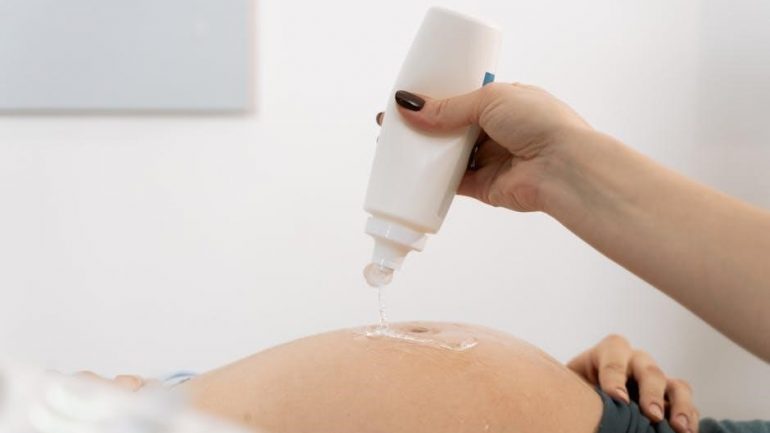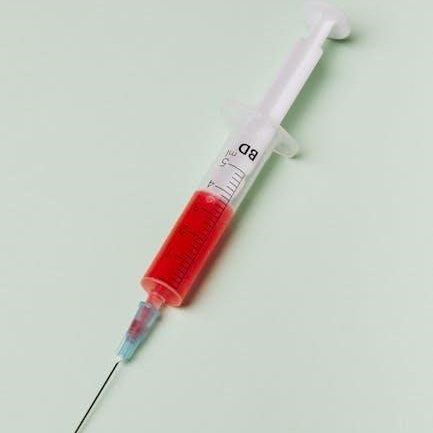2010 Toyota Corolla Manual⁚ A Comprehensive Overview
This overview explores the 2010 Toyota Corolla with a manual transmission. We delve into its specifications, performance, fuel efficiency, maintenance needs, common issues, and market value. Discover the driving experience, interior/exterior features, and how it compares to competitors. Information regarding parts availability and resale value is also included.
Engine Specifications and Performance
The 2010 Toyota Corolla manual offered a range of engine options depending on the market and trim level. While specific details vary by region, common engine choices included a 1.6L or 1.8L four-cylinder gasoline engine. These engines were known for their reliability and fuel efficiency, characteristics that contributed to the Corolla’s popularity. The 1.6L engine typically delivered around 122 horsepower, providing adequate power for daily driving and city commutes. The 1.8L variant offered slightly more power, making it a bit more responsive for highway driving or situations requiring quicker acceleration. Performance was generally described as adequate rather than exhilarating, reflecting the Corolla’s focus on practicality and efficiency over outright speed. The manual transmission itself contributed to a more engaging driving experience compared to the automatic option, offering greater control and potentially slightly improved fuel economy. Owners often praised the engine’s durability and ease of maintenance, making it a cost-effective choice in the long run. Specific torque figures and 0-60 mph times would need to be verified based on the exact engine and trim level.
Transmission Details and Features
The 2010 Toyota Corolla manual featured a five-speed or six-speed manual transmission, depending on the specific model and region. This contrasts with the available four-speed automatic option. The manual gearbox offered drivers a more direct and engaging driving experience, allowing for greater control over engine speed and acceleration. Shifting was generally smooth and precise, although some owners reported that the shifter linkage could become loose or worn over time, requiring replacement of bushings or cables for optimal performance. The specific gear ratios varied slightly depending on the engine and overall drivetrain configuration. While the manual transmission provided a more spirited driving experience, it did demand more driver engagement than the automatic counterpart. The clutch was generally considered fairly easy to operate in city traffic and during everyday driving. Reviews from owners frequently praised the reliability of the manual transmission, with many reporting trouble-free operation for extended periods with proper maintenance. The longevity of the manual transmission is often cited as a key advantage compared to automatic transmissions, potentially lasting the entire lifespan of the vehicle under normal use.
Fuel Efficiency and Consumption
The 2010 Toyota Corolla manual’s fuel efficiency was generally praised for its economy. Specific figures varied based on engine size, driving style, and conditions, but generally, owners reported achieving respectable fuel consumption. City driving typically resulted in lower fuel economy compared to highway driving, a common characteristic across most vehicles. Many online reviews and owner reports highlighted the car’s ability to achieve relatively high miles per gallon (mpg) or kilometers per liter (km/l), particularly on long stretches of open road. The lightweight design of the Corolla, combined with the efficient engine, contributed to its overall fuel efficiency. Factors influencing fuel consumption included tire pressure, driving habits (aggressive acceleration and braking reduce fuel economy), and regular maintenance. While precise figures aren’t consistently available across all sources, the consensus points to the 2010 Corolla manual as a fuel-efficient choice compared to many vehicles in its class at the time. This fuel efficiency, along with the car’s reliability, often factored significantly into the decision-making process for potential buyers considering a used 2010 model. The combination of fuel efficiency and longevity made the Corolla a desirable option for budget-conscious consumers.
Maintenance and Repair
Regular maintenance is key to prolonging the lifespan of a 2010 Toyota Corolla manual. Following the manufacturer’s recommended service schedule is crucial, including timely oil changes, filter replacements (air, fuel, cabin), and fluid checks (brake, coolant, transmission). Addressing any issues promptly is also vital. Ignoring minor problems can lead to more significant and costly repairs down the line. The relative simplicity of the Corolla’s mechanical components makes many maintenance tasks manageable for DIY enthusiasts, potentially saving on labor costs. However, complex repairs or those requiring specialized tools should be left to qualified mechanics. Parts availability for the 2010 Corolla is generally good, with both new and used parts readily accessible through dealerships, auto parts stores, and online retailers. The cost of parts and labor varies depending on location and the specific repair needed. While Toyotas are known for reliability, regular inspections, and preventative maintenance are essential to keep the vehicle in optimal condition and avoid unexpected breakdowns. A well-maintained 2010 Corolla manual can provide many years of reliable service. Remember to consult your owner’s manual for detailed maintenance recommendations and schedules.
Common Issues and Troubleshooting
While the 2010 Toyota Corolla is known for its reliability, certain issues can arise. One common problem is wear and tear on the clutch, especially with frequent city driving or aggressive use. Symptoms include slipping, difficulty engaging gears, or a burning smell. Replacing the clutch is a relatively involved repair, best left to a professional. Another potential issue is the shifter cable bushings, which can wear out over time, leading to imprecise shifting. Replacement is often a relatively straightforward repair. Electrical issues, such as problems with the power windows, door locks, or audio system, can occur, sometimes due to faulty wiring or switches. Diagnosing these issues may require specialized tools and expertise. Brake system problems, including wear and tear on brake pads and rotors, are common in all vehicles and should be addressed promptly for safety reasons. Engine-related issues are less frequent in the 2010 Corolla but can include issues with the ignition system, sensors, or other components. Regular maintenance, as outlined in the owner’s manual, can help prevent many of these common issues. Consulting online forums and repair manuals can provide additional troubleshooting information. Remember to always consult a qualified mechanic for diagnosis and repair of any significant mechanical or electrical problems.
Parts and Availability
Finding parts for a 2010 Toyota Corolla, especially one with a manual transmission, is generally straightforward due to the model’s popularity and widespread use. Numerous sources exist for both genuine Toyota parts and high-quality aftermarket alternatives. Toyota dealerships are a reliable option for original equipment manufacturer (OEM) parts, ensuring a perfect fit and adherence to factory specifications. However, dealership prices tend to be higher. Online retailers specializing in automotive parts offer a broader selection and often more competitive pricing. Websites like eBay and Amazon frequently list parts for the 2010 Corolla, including both new and used components. Local auto parts stores are another convenient source, offering a blend of convenience and often competitive pricing, especially for common wear-and-tear items such as brake pads and filters. When sourcing parts online, it’s essential to verify compatibility with your specific vehicle’s year, make, model, and engine type; Checking part numbers and comparing specifications against your owner’s manual is crucial to ensure the correct fit and function. For less common or specialized parts, contacting a Toyota parts specialist or a salvage yard might be necessary. Remember to compare prices and reviews before purchasing to find the best value and quality for your needs. The wide availability of parts for the 2010 Corolla makes maintenance and repairs relatively easy and affordable.
Used Market Value and Pricing
The used market value of a 2010 Toyota Corolla with a manual transmission varies significantly based on several factors. Condition is paramount; a well-maintained vehicle with a clean history will command a higher price than one with significant wear and tear or accident damage. Mileage is another key determinant; lower-mileage vehicles typically retain more value. Specific features and trim levels also influence pricing. A Corolla with desirable options like sunroof or upgraded sound system might fetch a slightly higher price. Geographical location plays a role; prices can vary regionally due to market demand and local competition. Online resources such as Kelley Blue Book (KBB) and Edmunds provide estimated values based on various criteria, offering a useful starting point for price comparisons. However, these are only estimates, and the actual selling price may differ. Checking online classifieds and auction sites can reveal actual sale prices in your area, providing a more accurate picture of the current market value. Remember to inspect any used vehicle thoroughly before purchase, paying close attention to the mechanical condition, particularly the transmission, engine, and bodywork. A pre-purchase inspection by a trusted mechanic is always advisable. Negotiating the price is common practice when buying a used car; research comparable vehicles to determine a fair price and be prepared to walk away if the deal doesn’t meet your expectations. Ultimately, the final price will depend on supply and demand within your specific local market.
Model Variations and Trim Levels
The 2010 Toyota Corolla offered several variations and trim levels, though the exact availability might depend on the specific market region. Generally, buyers could expect a range of options impacting features and equipment. Base models typically featured essential components, prioritizing affordability and reliable transportation. Stepping up to higher trims often unlocked additional conveniences and upgrades. This could include features like enhanced sound systems with more speakers and potentially a CD player, upgraded cloth or even leather upholstery for improved comfort, and enhanced safety features beyond the standard equipment. Some models might have included alloy wheels instead of steel, enhancing the vehicle’s appearance. Options like power windows and door locks were common, and some trims might offer them as standard or upgrades. The availability of a sunroof, a popular option, could also vary across trim levels. The specific engine options paired with the manual transmission could also differ across trims, with some offering more powerful engines or variations in fuel efficiency. In some markets, a special edition might have been offered, typically incorporating unique styling features and additional equipment as a package to set it apart. It’s important to consult brochures or online resources specific to your region to understand the exact trim levels and features available for the 2010 Toyota Corolla manual transmission in your area, as the options varied depending on geographical location and market demands.
Safety Features and Ratings
The 2010 Toyota Corolla, regardless of transmission type, incorporated a range of safety features designed to protect occupants. Standard safety equipment typically included driver and passenger airbags, enhancing protection in frontal collisions. Seatbelts, of course, were standard across all models and trim levels, and often included features to enhance safety and protection. Some models might have offered side airbags as well, providing additional protection in side impacts. Anti-lock brakes (ABS) were often a standard feature, helping prevent wheel lockup during sudden braking, improving control and reducing stopping distances. While advanced driver-assistance systems (ADAS) like lane departure warnings or adaptive cruise control were not as common in 2010 vehicles as they are today, the 2010 Corolla’s robust construction and passive safety features played a significant role in its safety performance. Independent safety testing organizations like the IIHS (Insurance Institute for Highway Safety) and NHTSA (National Highway Traffic Safety Administration) would have conducted crash tests and assigned safety ratings to the 2010 Corolla. These ratings would have considered various factors, including the effectiveness of the airbags, seatbelts, and overall structural integrity of the vehicle in different types of collisions. To find the specific safety ratings for the 2010 Corolla, it’s best to consult the official websites of the IIHS and NHTSA, searching for the year and model of the vehicle. Remember that safety ratings can vary slightly depending on trim levels and specific options. Always reference official safety data.
Resale Value and Depreciation
The resale value of a 2010 Toyota Corolla with a manual transmission is influenced by several factors. Condition is paramount; a well-maintained vehicle with a documented service history will command a higher price than one with neglected maintenance or a history of accidents. Mileage is another critical factor; lower mileage generally translates to higher resale value, reflecting less wear and tear on the vehicle’s components. The specific trim level and any optional features also impact resale value. Vehicles with desirable features, such as sunroof or upgraded sound systems, might fetch a slightly higher price. Market demand plays a significant role; the popularity of the model and the availability of similar used vehicles affect pricing. Geographical location also influences resale value, as prices can fluctuate based on regional demand and local market conditions. Generally, Toyotas, and Corollas specifically, are known for their reliability and longevity, contributing to relatively strong resale value compared to some other brands. However, depreciation is an inevitable aspect of vehicle ownership. The rate of depreciation varies depending on the factors mentioned above. To get a realistic estimate of the resale value of a specific 2010 Toyota Corolla manual, resources like Kelley Blue Book (KBB) or Edmunds provide used car valuation tools that consider all these variables. These tools usually require information such as the vehicle’s mileage, condition, and options to generate an estimate. Checking online classifieds and auction sites can also provide insights into current market prices for similar vehicles.
Driving Experience and Handling
The 2010 Toyota Corolla manual offers a driving experience characterized by its balance of practicality and ease of use. The manual transmission provides a level of driver engagement often appreciated by enthusiasts, allowing for precise control over engine speed and acceleration. The relatively lightweight nature of the Corolla contributes to nimble handling, making it maneuverable in city traffic and responsive on winding roads. While not designed for aggressive driving, it provides confident handling for everyday use. The steering is typically described as light and responsive, making parking and navigating tight spaces straightforward. The suspension system delivers a comfortable ride, effectively absorbing minor road imperfections. However, on rougher surfaces, some road noise might be noticeable. Fuel efficiency, a hallmark of Corolla models, contributes to an economical driving experience. The overall driving experience is generally considered smooth and predictable, making the 2010 Corolla manual a suitable choice for a wide range of drivers, from commuters to those who occasionally venture onto more challenging roads. The car’s size and weight make it easy to manage in various driving conditions, offering a comfortable and predictable driving experience that prioritizes comfort and ease of use. While not sporty, its responsive handling and fuel efficiency make it a practical and enjoyable car to drive.
Interior and Exterior Features
The 2010 Toyota Corolla’s exterior presents a clean, understated design typical of its generation. Characterized by smooth lines and a relatively compact footprint, it offers a practical and unassuming aesthetic. While not overtly stylish, its design prioritizes functionality and efficiency. Color options likely varied depending on trim level and regional availability, ranging from classic neutrals to potentially bolder shades. The exterior features generally included standard halogen headlights, basic taillights, and steel wheels, although alloy wheels might have been available on higher trim levels. Inside, the Corolla provides a functional and comfortable cabin. The dashboard layout is straightforward and user-friendly, with easily accessible controls. Material quality is generally considered adequate for its class, prioritizing durability over luxurious materials. Features such as air conditioning, power windows, and a basic audio system were standard or available options, depending on the specific trim level. The seating is typically described as comfortable and supportive for average-sized occupants, offering sufficient space for both front and rear passengers. Trunk space is generally adequate for everyday needs, suitable for groceries or luggage for shorter trips. Overall, the interior design prioritizes practicality and ease of use, reflecting the Corolla’s focus on providing reliable and affordable transportation.
Comparison with Competitors
In 2010, the Toyota Corolla faced stiff competition from other compact cars, notably the Honda Civic, Mazda3, and Ford Focus. Compared to the Honda Civic, the Corolla often offered a more budget-friendly price point, but the Civic sometimes boasted a sportier driving experience and potentially more advanced features. Against the Mazda3, the Corolla generally fell slightly behind in terms of styling and driving dynamics, with the Mazda3 often lauded for its more engaging handling. However, the Corolla typically held an edge in terms of reliability and fuel efficiency. The Ford Focus, particularly its sportier trims, presented a more dynamic alternative, but sometimes lacked the Corolla’s reputation for longevity and low running costs. The Corolla’s strengths lay in its reliability, fuel economy, and affordability, making it a compelling choice for buyers prioritizing practicality and value. While competitors might have offered sportier handling or more upscale interiors, the Corolla often provided a balanced package that appealed to a broad range of buyers. Ultimately, the “best” car depended heavily on individual priorities, with the Corolla successfully carving a niche for itself within a competitive market segment. The decision often hinged on whether buyers prioritized sporty handling, advanced features, or a robust, dependable, and economical vehicle.


